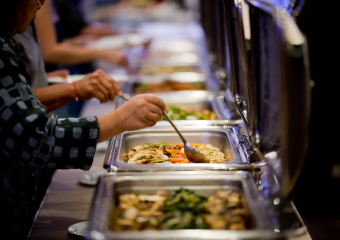Mastering Oven Convection: A Guide to Roast, Bake, and More
Mastering Oven Convection: A Guide to Roast, Bake, and More
Convection ovens have revolutionized the way we cook, offering a versatile and efficient method for preparing a variety of dishes. By utilizing a fan to circulate hot air, convection ovens ensure even cooking and browning, making them a favorite among home cooks and professional chefs alike. This guide will explore the ins and outs of mastering oven convection, focusing on roasting, baking, and more.
Understanding Convection Cooking
At its core, convection cooking involves the use of a fan and exhaust system to distribute heat evenly throughout the oven. This method has several advantages over traditional baking:

- Faster Cooking Times: Convection ovens can reduce cooking times by up to 25%.
- Even Browning: The circulating air helps achieve a golden-brown crust on baked goods and roasted meats.
- Energy Efficiency: Shorter cooking times mean less energy consumption.
Roasting with Convection
Roasting is one of the most popular uses for convection ovens. The even heat distribution allows for perfectly cooked meats and vegetables. Here are some tips for successful roasting:
- Preheat the Oven: Always preheat your convection oven to ensure optimal cooking conditions.
- Use a Roasting Rack: Elevating the meat allows air to circulate around it, promoting even cooking.
- Monitor Internal Temperature: Use a meat thermometer to avoid overcooking.
For example, a whole chicken can roast in about 1 hour at 375°F in a convection oven, compared to 1.5 hours in a conventional oven, resulting in juicy meat and crispy skin.

Baking with Convection
Baking in a convection oven can yield superior results for cookies, cakes, and bread. Here are some baking tips:
- Reduce Temperature: Lower the baking temperature by 25°F compared to conventional recipes.
- Rotate Pans: For even baking, rotate your pans halfway through the cooking time.
- Watch for Doneness: Check for doneness a few minutes earlier than the recipe suggests.
Statistics show that baked goods in convection ovens often rise higher and have a better texture due to the consistent heat flow.
Other Uses for Convection Ovens
Beyond roasting and baking, convection ovens can be used for a variety of cooking methods:

- Broiling: The fan helps to evenly distribute heat, making broiling more effective.
- Dehydrating: The airflow is perfect for drying fruits and vegetables.
- Reheating: Convection ovens reheat food more evenly than microwaves.
Conclusion
Mastering oven convection can elevate your cooking game, providing faster, more efficient, and tastier results. By understanding the principles of convection cooking and applying the tips outlined in this guide, you can roast, bake, and explore various cooking methods with confidence. Whether you’re preparing a holiday feast or a simple weeknight dinner, a convection oven can be your best ally in the kitchen.

Featured Image

Summary
This article provides a comprehensive guide to mastering convection ovens, highlighting their advantages in cooking, roasting, and baking. It offers practical tips for achieving optimal results, including temperature adjustments and cooking techniques. By leveraging the benefits of convection cooking, readers can enhance their culinary skills and enjoy delicious meals with greater efficiency.





